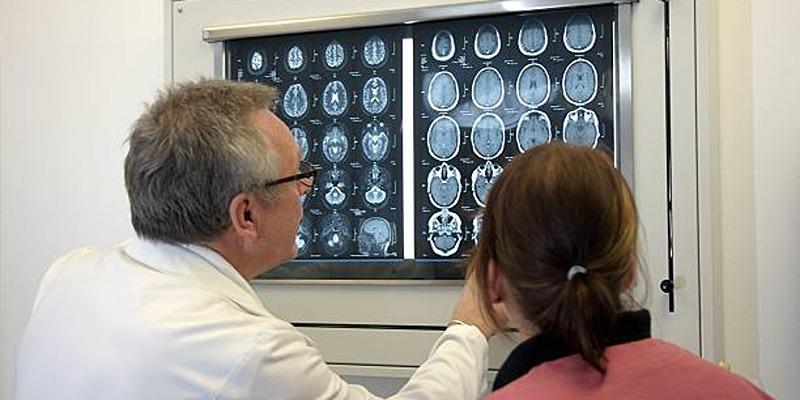Common Causes of Epilepsy: A Comprehensive Guide
Advertisement
Epilepsy is a neurological condition characterized by recurrent unprovoked seizures and affects a population of over fifty million people around the world. Also known as epilepsies, this is an illness defined by one or more unprovoked seizures resulting from neuronal disorganization in the brain. The symptoms of this condition range from mild to severe, and learning more about what brings it on significantly helps with diagnosis and an effective approach to the problem. In this blog, we will explore the different general causes of epilepsy as well as individual breakdowns for each classification.
What is Epilepsy?
 Epilepsy is a chronic brain disorder marked by recurring seizures, which are episodes of disrupted brain activity. These seizures can range from mild lapses in attention to severe convulsions and unconsciousness. The condition is not contagious but can significantly impact an individual's quality of life.
Epilepsy is a chronic brain disorder marked by recurring seizures, which are episodes of disrupted brain activity. These seizures can range from mild lapses in attention to severe convulsions and unconsciousness. The condition is not contagious but can significantly impact an individual's quality of life.
Types of Seizures
- Focal Seizures: Originate in one part of the brain and may cause localized symptoms.
- Generalized Seizures: Affect the entire brain and often lead to loss of consciousness.
- Unknown Onset Seizures: When the beginning of the seizure is not clearly understood.
Understanding the type of seizures experienced can help pinpoint potential causes and guide treatment plans.
Genetic Factors
Studies indicate that genetics significantly influence the likelihood of developing epilepsy. Certain inherited genetic mutations or variations can increase an individual's vulnerability to experiencing seizures.
How Genetics Contribute
Genetics plays a significant role in the development of epilepsy, particularly in individuals with a family history of the condition. Mutations in specific genes that regulate brain function can predispose individuals to epilepsy.
Types of Genetic Epilepsy
- Idiopathic Generalized Epilepsy: Often linked to hereditary factors, this type typically begins in childhood or adolescence.
- Dravet Syndrome: A severe form of epilepsy caused by mutations in the SCN1A gene.
Advancements in Research
Ongoing genetic studies are uncovering more links between DNA and epilepsy, paving the way for personalized treatments targeting genetic abnormalities.
Head Injuries
Head injuries are a leading cause of epilepsy among young adults. Traumatic brain injuries (TBIs) can lead to structural changes in the brain, which can result in seizures months or years later. Even mild concussions may increase the risk of developing epilepsy.
Traumatic Brain Injury
Head injuries are a leading cause of epilepsy, especially in younger adults and children. Severe trauma can disrupt normal brain function, creating scar tissue that leads to seizures.
Common Scenarios Leading to Injuries
- Motor vehicle accidents
- Falls from significant heights
- Contact sports without proper safety equipment
Post-Traumatic Epilepsy
Seizures resulting from a head injury may not appear immediately but can develop months or even years later, making long-term monitoring essential.
Brain Conditions
Certain brain conditions can lead to epilepsy, including:
Stroke
Strokes, especially ischemic strokes caused by blocked blood flow, are a common cause of epilepsy in adults over 50. Brain tissue damage from strokes often leads to scarring and abnormal electrical signals.
Brain Tumors
Both benign and malignant tumors can press on or disrupt brain cells, causing seizures. Tumors located near the brain's electrical pathways are particularly likely to trigger epilepsy.
Infections of the Brain
Certain infections, such as meningitis and encephalitis, cause inflammation in the brain that can lead to seizures. Proper immunizations and early treatment of infections can reduce the risk.
Developmental and Neurological Disorders
Epilepsy may develop in tandem with other developmental or neurological disorders, including:
Cerebral Palsy
Cerebral palsy is a developmental disorder caused by brain damage before or during birth. A significant percentage of individuals with cerebral palsy also experience epilepsy.
Neurodevelopmental Conditions
Conditions such as autism spectrum disorder and Rett syndrome have strong links to epilepsy. These disorders often involve abnormal brain wiring, which increases the likelihood of seizures.
Metabolic and Nutritional Disorders
Epilepsy can also occur due to metabolic or nutritional disorders such as:
Hypoglycemia and Other Imbalances
Metabolic disorders such as hypoglycemia (low blood sugar) can lead to seizures. Similarly, electrolyte imbalances, such as low sodium or calcium levels, may disrupt normal brain activity.
Vitamin Deficiencies
Vitamin B6 (pyridoxine) is crucial for brain development and function. Deficiencies, especially in infants, can result in seizures that resemble epilepsy. Supplementation can often reverse the symptoms.
Rare Metabolic Conditions
Disorders like phenylketonuria (PKU) or mitochondrial diseases can also lead to epilepsy. These conditions require specialized treatment plans.
Environmental and Lifestyle Triggers
While genetics and underlying conditions play a significant role in developing epilepsy, certain environmental and lifestyle factors can also trigger seizures. These triggers vary from person to person but may include:
Sleep Deprivation
Consistently poor sleep affects the brain's electrical stability, making it a common trigger for seizures. For individuals with epilepsy, a regular sleep schedule is vital.
Stress and Anxiety
Chronic stress increases cortisol levels, which can disrupt normal brain activity. Stress management techniques, such as mindfulness and relaxation exercises, can significantly reduce seizure frequency.
Sensory Triggers
Flashing lights, loud noises, and even strong odors can act as triggers for photosensitive individuals. Avoiding environments with these stimuli is crucial for managing epilepsy.
Age-Related and Degenerative Causes
 While epilepsy can occur at any age, certain age-related factors can increase the risk of developing seizures later in life. These include:
While epilepsy can occur at any age, certain age-related factors can increase the risk of developing seizures later in life. These include:
Epilepsy in Older Adults
Degenerative diseases like Alzheimer’s disease and Parkinson’s disease are associated with an increased risk of epilepsy. The progressive loss of brain cells can lead to abnormal electrical activity.
Age-Related Changes
As the brain ages, structural changes and reduced blood flow may increase susceptibility to seizures, even in individuals with no prior history of epilepsy.
Unknown and Idiopathic Causes
In some cases, no identifiable cause for epilepsy is found. This type, called idiopathic epilepsy, accounts for a significant portion of cases. While frustrating, this highlights the need for further research and advancements in diagnostic techniques.
When to Seek Medical Help
Epilepsy symptoms can vary widely, but certain signs warrant immediate medical attention:
- Recurring seizures without a clear trigger
- Loss of consciousness during seizures
- Prolonged confusion or memory loss post-seizure
Diagnostic Methods
Doctors use tools like EEGs, MRIs, and CT scans to identify the cause and severity of epilepsy. A thorough medical history and neurological examination also play key roles in diagnosis.
Conclusion
Epilepsy is a multifaceted condition with a wide range of causes, including genetic factors, head injuries, brain conditions, and lifestyle influences. Understanding these causes is essential for managing the condition effectively and supporting those affected. By raising awareness and promoting research, we can improve the lives of millions living with epilepsy.
If you suspect epilepsy in yourself or a loved one, consult a healthcare provider for an accurate diagnosis and personalized treatment. Early intervention can make a significant difference in managing this complex condition.
On this page
What is Epilepsy? Types of Seizures Genetic Factors How Genetics Contribute Types of Genetic Epilepsy Advancements in Research Head Injuries Traumatic Brain Injury Common Scenarios Leading to Injuries Post-Traumatic Epilepsy Brain Conditions Stroke Brain Tumors Infections of the Brain Developmental and Neurological Disorders Cerebral Palsy Neurodevelopmental Conditions Metabolic and Nutritional Disorders Hypoglycemia and Other Imbalances Vitamin Deficiencies Rare Metabolic Conditions Environmental and Lifestyle Triggers Sleep Deprivation Stress and Anxiety Sensory Triggers Age-Related and Degenerative Causes Epilepsy in Older Adults Age-Related Changes Unknown and Idiopathic Causes When to Seek Medical Help Diagnostic Methods ConclusionAdvertisement












